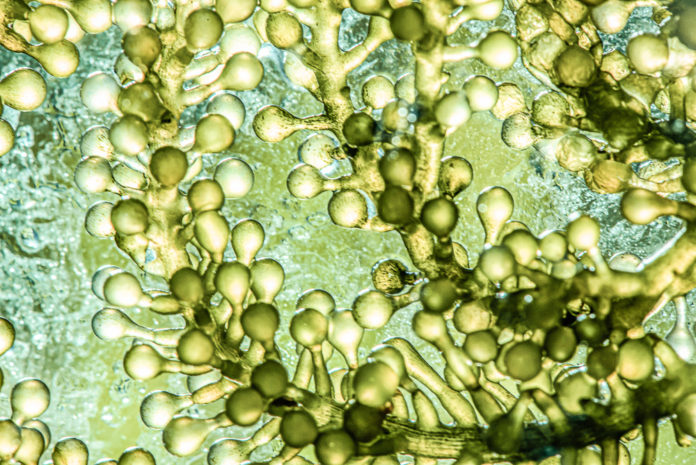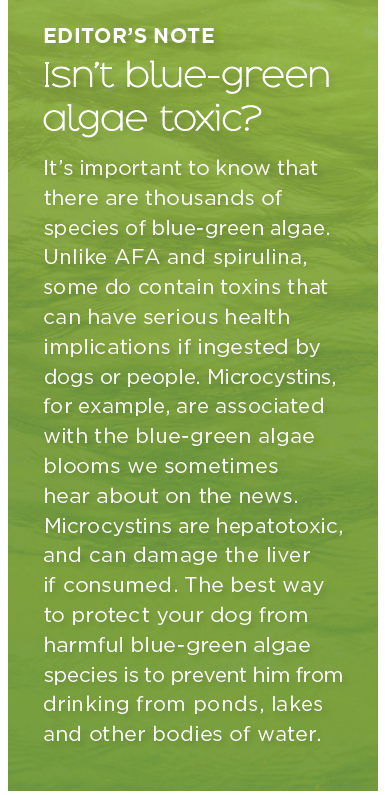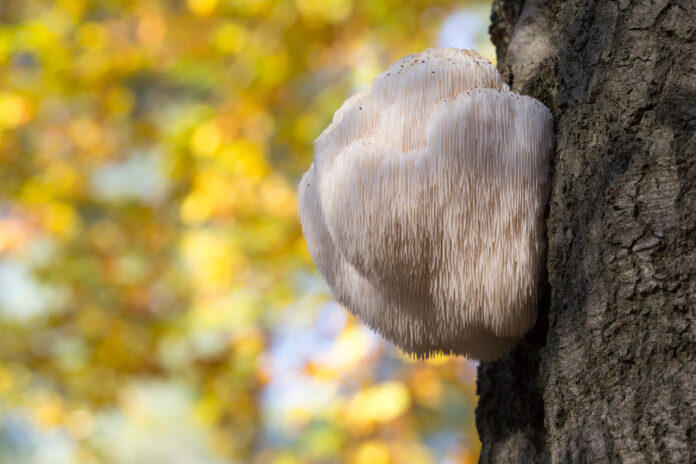Microalgae – a “green food” that’s good for your dog

Discover how AFA microalgae can benefit the health of your canine companion.
For the past several decades, people have been enthralled by the “green foods” revolution. These foods include barley grass, microalgae (e.g. chlorella, spirulina and Aphanizomenon flos-aquae), wheat grass juice and sprouts. In this article, we’ll look specifically at Aphanizomenon flos-aquae (AFA) microalgae, and the role it can play in your dog’s health.
A short history of microalgae
Microalgae have been part of the human diet for thousands of years. The two most popular blue-green algae are Aphanizomenon flos-aquae (AFA) and Spirulina. Both are considered superfoods, with similarities and several important differences. AFA has been used in veterinary practice since 1995.
 Aphanizomenon flos-aquae – a unique microalgae
Aphanizomenon flos-aquae – a unique microalgae
AFA is the “greenest” superfood known, because it contains so much chlorophyll (green photosynthesizing pigment). AFA provides critical balancing nutrients in a very bio-available form easily assimilated by the body. A ten-gram portion of AFA algae, for instance, contains 300 mg of chlorophyll, whereas a ten-gram portion of spirulina has only 115 mg.
The source for AFA algae is Klamath Lake, the largest freshwater lake in the Oregon watershed. Most estimates indicate that the spring waters flowing into Klamath Lake come from Crater Lake, after a journey of approximately 15 miles through mineral-rich underground aquifers.
Generally, wild algae are found in bodies of water that are stagnant or deteriorating, but Klamath Lake is an exception, and supports not only a tremendous biomass of AFA but also fish, waterfowl and predatory bird species. Klamath Lake is rather pristine, devoid of industrial activities and surrounded by national parks.
Why is AFA so nutritious?
Minerals
AFA contains a wealth of minerals that help support your dog’s health, including boron, calcium, chloride, chromium, cobalt, copper, fluoride, germanium, iodine, iron, magnesium, manganese, molybdenum, nickel, phosphorus, potassium, selenium, silicon, sodium, tin, titanium, vanadium and zinc.
Chlorophyll
The green pigment found in plants, chlorophyll is responsible for the transformation of light energy into chemical energy. Chlorophyll acts as a powerful oxygenator and can stimulate the production of hemoglobin in your dog’s body, helping to improve blood flow.
Chlorophyll also improves cardiac efficiency. Chlorophyllin, a water-soluble form of chlorophyll, protects against certain forms of liver cancer at a concentration similar to what is found in green leafy foods. It also stimulates the regeneration of damaged liver cells, and increases circulation to all organs by dilating blood vessels.
Chlorophyll helps balance the pH of the blood by increasing alkalinity and reducing acidity. Even slight shifts toward acidity can cause the formation of free radicals and oxidative damage, which promotes risk of disease. Chlorophyll may also protect against environmental toxins.
Amino acids and proteins
AFA has 20 amino acids that are easily absorbed by your dog’s body, and help support the health of his cells. A specific protein from AFA, called cyanovirin-N (CV-N), has been shown to protect against certain infections.
Phycocyanins
Phycocyanin serves as a protein storage unit and antioxidant, protecting your dog’s cells from certain wavelengths. This pigment may reduce or prevent inflammation, as well as some forms of colitis and asthma. It also helps promote the healthy functioning of your dog’s liver, aids in the digestion of amino acids, and has been shown to inhibit the formation of cancer.
Beta-carotene and other carotenoids
AFA is an exceptional source of highly bio-available carotenoids, and activates enzymes that produce vitamins E and K. Beta-carotene protects against infection, and is a powerful antioxidant against skin disorders, night blindness, environmental pollutants, allergies and immune system dysfunction.
Research confirms that carotenoids reduce the incidence of lung, stomach, colon, bladder, uterine, ovarian and skin cancers. AFA algae contains both forms of beta-carotene — the CIS form, found in fruits and vegetables, and the TRANS form, found in synthetic supplements and root vegetables. When both forms are eaten simultaneously, the rate of absorption can be over ten times that of the TRANS form alone.
Carotenoids are also helpful in preventing cardiovascular diseases. A 13-year study showed that men with the highest blood levels of carotenoids had 36% fewer heart attacks and deaths than those with the lowest levels of carotenoids. AFA also contains lutein and lycopene, two carotenoids known to protect against certain forms of cancer.
Polyunsaturated fatty acids, especially Omega-3
Lipids provide the most concentrated source of energy, and serve to nourish the nerves and blood vessels and lubricate your dog’s skin and tissues.
Microalgae are primary sources of DHA and EPA – essential fatty acids (EFAs). Nearly 50% of the lipid content in dried AFA is composed of Omega-3 essential fatty acids, which are beneficial to the immune, cardiovascular and nervous systems. They can alleviate depression, may help in neuropathic conditions associated with diabetes, and prevent platelet aggregation. Omega-3s inhibit many forms of cancer, namely breast, prostate, pancreatic and colon.
 What does the research say?
What does the research say?
Since the mid-1990s, studies have provided a significant amount of data supporting and explaining the benefits of AFA. For example, a comprehensive retrospective study of more than 200 cases strongly suggested that AFA acts on the immune and nervous systems and prevents the process of inflammation. Take a look at what else has been discovered about this “super” microalgae:
- Immune modulation
Natural Killer (NK) cells are a crucial component of the immune system. They identify the site of an infection or of cancerous cell growth and trigger apoptosis, or programmed cell death. In one study, AFA was found to be many times more potent than arabinoxylan, which is extracted from rice and is one of the most potent NK cell activators known.
- Stem cell activity
A new theory suggests that bone marrow stem cells leave the bone marrow and travel throughout the body, providing for healing and regeneration of damaged organs. If true, there is no need to harvest, grow and reinject stem cells. Regeneration could take place simply by stimulating the release and subsequent migration of stem cells from the bone marrow into tissues. AFA is the only natural compound known to stimulate this.
In people, AFA may be useful for treating Parkinson’s disease, Alzheimer’s disease, diabetes, multiple sclerosis and cardiac arrest recovery.
AFA contains 4% RNA and DNA, which are needed to make new cells and repair damaged ones. These decrease with age, resulting in a weakened immune system.
- Chemoprotection
A substance is “chemoprotective” when it protects against the toxic effects of chemicals or compounds in food or the environment. Various species of microalgae have been demonstrated to absorb heavy metals. Scientific studies have shown that cyanophyta, for instance, offers significant protection against heavy metal toxicity in the kidneys.
A sugar present on the cell membrane of microalgae has also been confirmed to bind and eliminate pesticides in the intestine.
AFA supplements
Supplements that can benefit health beyond the role of basic nutrition are becoming increasingly popular. In a recent study at Yale New Haven Hospital, however, 257 brands of multivitamin supplement pills were evaluated and 80% found to be inadequate, incomplete or imbalanced.
However, wild blue-green algae was found to be in perfect harmony with the body’s biochemistry, resulting in maximum utilization. There are a number of high quality products available; talk to your vet about adding an AFA supplement to your dog’s diet.
What is AFA used for?
AFA is routinely used for a number of conditions, including allergies, immune imbalance, chronic inflammation, and as a general wellness strategy. It is remarkably useful, particularly when combined with other gut- and liver-repairing nutrients, probiotics, and immune modulators. Find a good quality AFA product, with the help of your integrative or holistic vet, and see how it can help your own dog!



